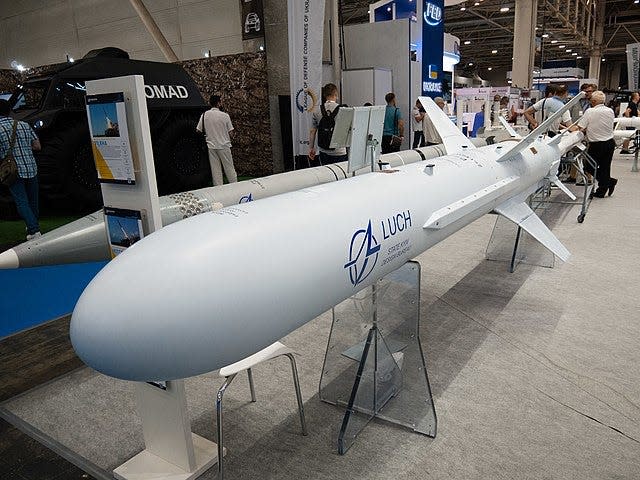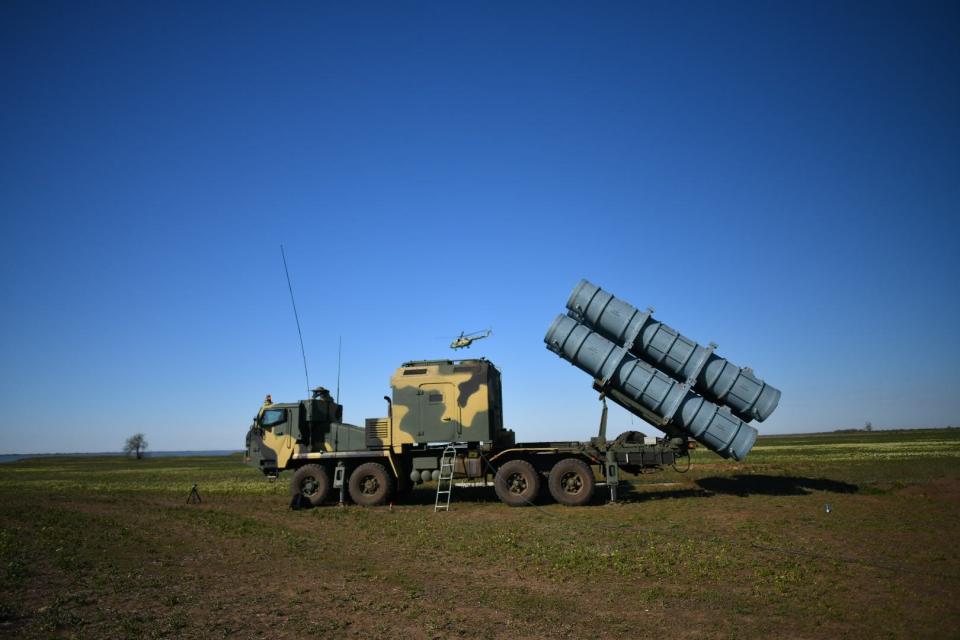Ukraine can't hit everything it wants in Russia with US-made ATACMs, so it's making do with a homemade option

Ukraine faces restrictions on using US-made, long-range missiles to strike targets inside Russia.
To work around this, Kyiv has modified its Neptune anti-ship missile for land attack.
Ukraine has used this weapon to strike energy facilities inside Russia in recent weeks.
The US has outfitted Ukraine with an arsenal of long-range missiles but continues to put restrictions on how it can use them, limiting its ability to strike Russia the way it wants. As a workaround in this dilemma, Kyiv has turned to a homemade weapon first used to sink ships.
American-made MGM-140 Army Tactical Missile Systems, also known as ATACMS, are one of the more vaunted weapons that Ukraine has in its arsenal. The Biden administration, however, has barred the country from firing them into Russia's sovereign territory; instead limiting their use solely to occupied regions of Ukraine.
Earlier this month, Zelenskyy expressed his frustration with the continued prohibition on striking into Russia with these US-provided weapons. But Ukraine isn't completely without options.
Multiple times in recent weeks, Ukraine has turned to domestically produced Neptune anti-ship missiles, modified for land attack, to strike ground targets inside Russia, specifically going after Moscow's vulnerable energy facilities.
The R-360 Neptune is a subsonic, long-range cruise missile that was developed by Luch Design Bureau, a Kyiv-based defense manufacturer. Ukraine has used this munition in the past to strike high-value Russian targets. Early in the war, Ukraine used the Neptune to sink the guided-missile cruiser Moskva, once the flagship of the Russian Black Sea Fleet.

But Ukraine has also been working to modify the Neptune missile so that it can be used to strike land targets. There are indications Ukraine previously used the modified version of this weapon against Russian air defenses, including its S-400s, stationed on the occupied Crimean peninsula, per officials and media reports.
In late May, Ukrainian forces used Neptune missiles to strike an oil depot near Kavkaz, a port along the Black Sea in Russia's Krasnodar Krai region.
Several weeks later, on Monday, Ukraine again used its Neptune missiles on a ground target, this time striking an oil terminal in nearby Chushka, just over the Kerch Straight from Crimea.
Analysts at the Washington, DC-based Institute for the Study of War think tank noted that both Neptune missile strikes have occurred in areas of Russian territory that are within the range of Ukraine's ATACMS.

The locations of both strikes are some 150 miles from the front lines and within the range of the 190-mile long-range ATACMS variant. But the US has prohibited Ukraine from using these powerful missiles to strike military targets inside Russia, thus awarding Moscow what experts and officials have described as sanctuary space.
"The US has not allowed Ukrainian forces to use existing US-provided weapons to strike legitimate targets in Russian territory for much of the full-scale invasion thus far and still prohibits Ukraine from using ATACMS anywhere in Russia," the analysts wrote in a Tuesday assessment.
"Ukraine first debuted Neptune anti-ship missiles against Russian naval targets in April 2022 and has had to further develop and modify these missiles to conduct deep strikes against Russian territory," the analysts said.
The modified Neptune missiles is one of a number of Ukrainian innovations of the war made out of necessity and a notable lack of other options. Kyiv has, for example, turned to exploding naval drones to make up for a lack of a proper navy and has developed cheap, long-range drones to strike military and energy targets deep inside Russia where it is prohibited from using Western-made weaponry.
Read the original article on Business Insider


